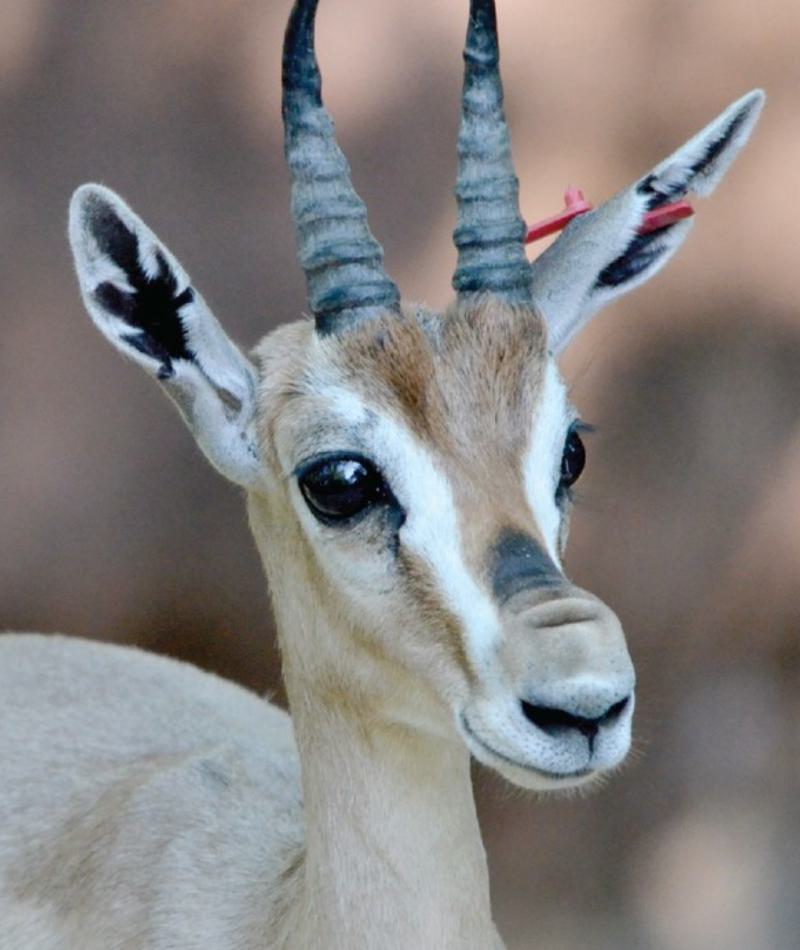
Speke's Gazelle
Gazella spekei
Did you know?
- The Speke’s gazelle is part of the Bovidae family, which includes bison and other antelopes.
- They live in semi-desert grasslands in Somalia and possibly Ethiopia.
- They will “pronk,” or leap in the air to warn predators and competing males.
- When food is scarce, they merge into large herds of up to 20 animals.
- A female pregnancy lasts about six months.
The Smallest Gazelle
Speke’s gazelles are among the smallest gazelles, reaching a maximum shoulder height of only about two feet. Males weigh up to 40 pounds, while females range from 24 to 35 pounds. They have unique noses that amplify their loud alarm calls. By inflating the loose skin on the top of its muzzle, the gazelle can increase the volume of its call, which resembles a honking sound. Their alarms help keep the whole herd safe.
Herds and Social Structures
Speke's gazelles are social animals that live in two different types of herds. One is composed of an adult male with his harem of females, with which he breeds. This family herd typically has about 12 individuals. The second type of herd is the bachelor herd, which is made up of juvenile males and young adult males that do not have harems (yet). When food is scarce smaller herds may merge together.
Threat Level
- Unknown
- Common
- Near Threatened
- Threatened
- Endangered
- Critically Endangered
- Extinct in the Wild
Endangered
The Speke's Gazelle faces a very high risk of extinction in the wild.
Range
Somalia and possibly Ethiopia
Habitat
Semi-desert grasslands

We care about Speke’s gazelles
For over 20 years, the Saint Louis Zoo has coordinated the cooperative breeding program of this species in North American zoos. The Saint Louis Zoo has long been a proud leader in the captive breeding of Speke's gazelles. More than 200 calves have been born here!
Through the Association of Zoos and Aquariums Species Survival Plan for Speke’s gazelles, we are working to increase the number and genetic quality of this species in human care. Learn more about how we are helping wildlife around the world.
Find this animal in Red Rocks

SAINT LOUIS ZOO ZONE
Red Rocks
At Red Rocks, you’ll view some of the world’s most powerful predators living near some of the world’s most graceful prey. Tigers, zebra and giraffes all share the natural rocky boulders and outcroppings as their territory. With shading trees and a bird or two among the mammals, Red Rocks is a great place to spend a day at the Saint Louis Zoo.

